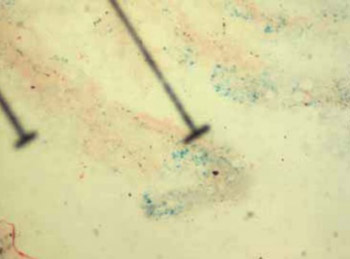The Study of Volume Density of Tracheal Ganglions In Vitro in New Born Babies with Respiratory Distress Syndrome
DOI:
https://doi.org/10.17305/bjbms.2009.2790Keywords:
trachea, ganglion, stereometryAbstract
Volume density of respiratory organs was studied in vitro in newborn babies at different age of gestation (abort, immature, premature and mature) using stereometric method. The total of 23 cases was subject to this study. The respiratory organs (trachea, lungs) were taken from autopsies of newborn babies exited from different causes. For this purpose the tissues were fixed in formalin (10%) solution, cut serially in 7μ and 10μ slabs. Volume density of the respiratory system was assessed stereometricaly using Universal testing system Weibel M 42. We observed that volume density of epithelia, musculature and glands were proportionally present in the tracheal tissue. Cellular interstitial tissue is consistently increasing and corresponds to the developmental stages of the newborn babies.
The density of tracheal ganglions is greater in premature ages of immature and premature newborns (p<0,05). Decreased number of ganglion cells is observed in mature ages (p<0,05). This is caused by intensive ramification of ganglions from serosa to deeper layers of trachea right to epithelium. Medium diameter of tracheal ganglions is greater in mature newborn babies and corresponds to developmental ages of babies.
Citations
Downloads

Downloads
Published
Issue
Section
Categories
How to Cite
Accepted 2017-12-07
Published 2009-11-20









